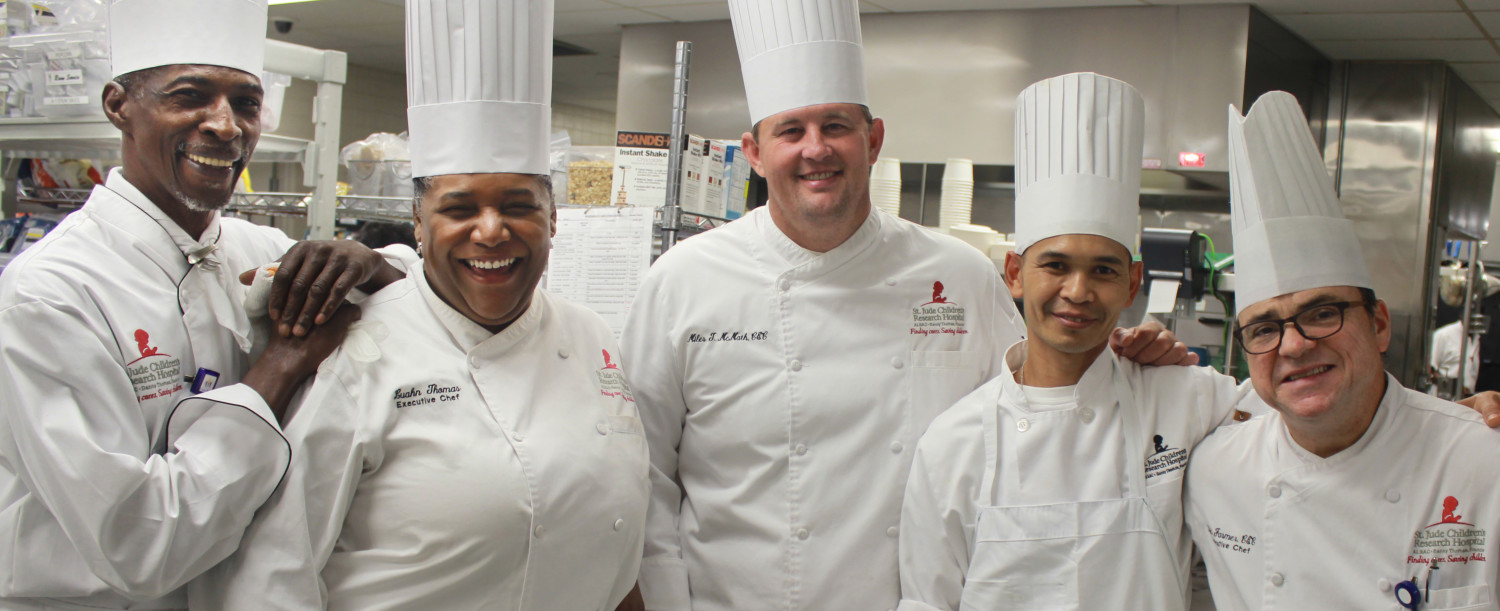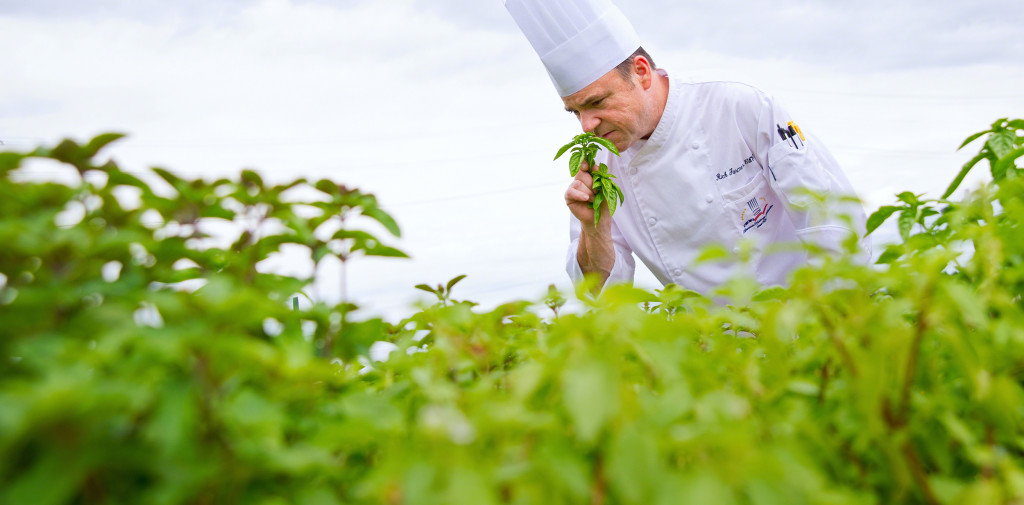Scott Sines, ©The Green Rocket News
Chemo can kill an appetite.
Convincing the sickest kids in the world to eat something healthy can be daunting, if not impossible. But Rick Farmer had an idea. Serve them candy. The executive chef at >St. Jude Children’s Research Hospital in Memphis combined his culinary smarts, science and childhood imagination into gummy fruit snacks cooked ultra-slow to maximize nutrition. Yes, candy. And he asked the kids to design the shapes, which explains the worms and skulls. “They just need to eat — anything — as long as it’s real food,” said Farmer. What they eat is part of the cure.
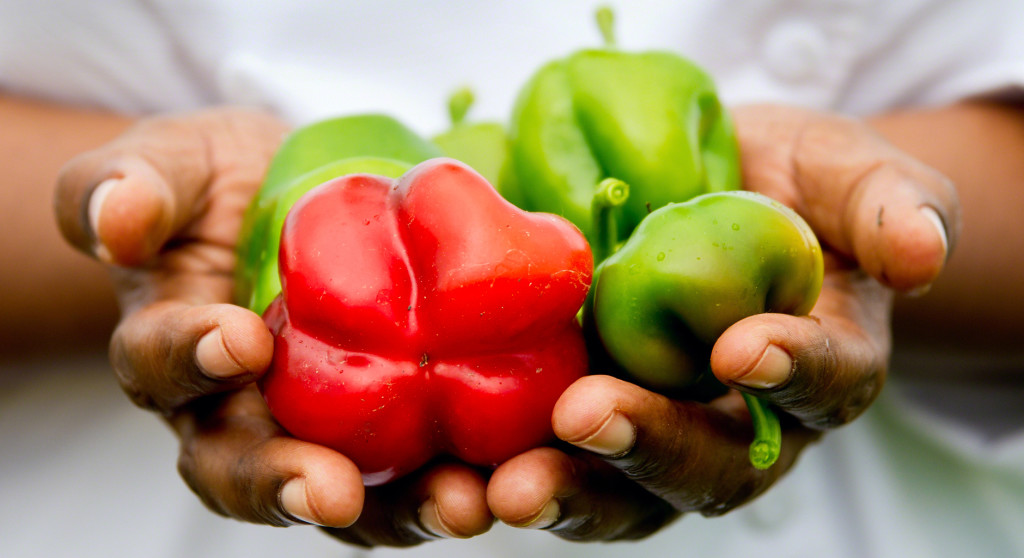
“We try not to say no to the kids,”
Miles McMath, Culinary Director
Miles McMath arrived at >St. Jude in 2008 with some >radical ideas about how to remake the >hospital’s cafeteria. The new Director of Culinary Operations looked at the pans of corn, green beans and other processed foods served to patients in their rooms, in the hospital restaurant and in their internal catering operations. He saw “a blank canvas.” 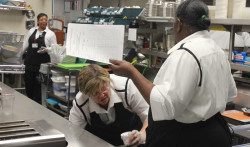
He is a chef on a mission. He and the team that feeds St. Jude represent a new generation of trained chefs who apply the ethic of fresh, locally grown, sustainable — healthier — food to a large, international iconic hospital where bland institutional cooking was the standard until five years ago.
That was before McMath, who brought a successful history of running his own restaurants, pitched a whole new way of doing business when St. Jude’s food contract expired. He found that the cost of local foods could not just save money but also be “more in line with St. Jude’s mission.”
Today, nearly 40 percent of what’s cooked is locally grown and represents about a $1 million annual economic boost for the region.
Seasonal fresh vegetables — some from as close as the campus garden, most of the rest from farms within 150 miles of St. Jude — shape the menus. Corn on the cob, butter beans, lady peas, fresh peaches and berries dot the cafeteria counters. McMath insists on the same high quality for meat, pork or poultry. In fact, before he ever buys, McMath visits every farmer to see for himself that organic standards are practiced, whether for vegetables or for beef, pork and poultry.
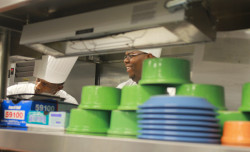 “I went to visit a cattle farm in Georgia and they had all their sick cows right out in front. I thought that was curious and asked the owner why he did that. He said because if we put the sick ones out in back, we tend to forget about them. When they’re out front we see them all the time.” Keeping the sick ones top of mind echoed St. Jude’s mission and now McMath buys regularly from the farm.
“I went to visit a cattle farm in Georgia and they had all their sick cows right out in front. I thought that was curious and asked the owner why he did that. He said because if we put the sick ones out in back, we tend to forget about them. When they’re out front we see them all the time.” Keeping the sick ones top of mind echoed St. Jude’s mission and now McMath buys regularly from the farm.
The personal ties also give him an inside track on scooping up any excess crops for a bargain.
“What the farmers have is what we cook,” he says. “When we’re swimming in cucumbers, we make pickles.”.
“The more we give the more we get”
Louahn Smith Thomas, executive chef

St. Jude’s chefs eagerly, carefully, prepare special requests for favorite foods from the kids. In fact, they solicit them. A la carte dishes get delivered to the patient, just like hotel room service. “If they ask for it we’ll try to cook it,” McMath says.
No detail seems too small.
A patient from Asia asked for black chicken (not blackened but black, also called silky chicken) with adzuki beans. The Memphis International Market sold the chicken and beans and the mother advised on every aspect of the recipe, down to the chunk of ginger, two garlic cloves, and even the earthenware pot.
“The mom asked me to very gently simmer the bird for about an hour and a half or until very tender. She suggested that I make this dish for all young people at St. Jude because it made her son feel rejuvenated and healthy,” says Rick Farmer. The adzuki beans and the black chickens are rich in antioxidants and considered nutritional super foods.
And no request seems too big.
A mother from Baton Rouge, Louisiana, requested a crawfish boil for her son, who was stuck at St. Jude for the July 4 holiday. McMath tracked down “a couple bags of crawfish” and even cooked the feast at his own farm.
“We’re all set up down there. We had fresh crawfish, corn, sausage and potatoes.”
He delivered it to the assigned room — and the mother and boy were thrilled. “You could see him perk up and his feet started moving,” McMath says.
Only one problem. Because of a room number mix-up, he actually served the Cajun feast to a boy from New Iberia who sincerely appreciated it.
Undeterred, McMath got back on the phone and rounded up more crawfish. Chef Loahn Thomas volunteered to drive to Mississippi, prepared another two-hour plus crawfish boil at his farm and delivered it, this time to the right boy from Louisiana. When asked about giving seriously ill kids sausage and spicy crawfish, McMath was incredulous, “It’s real food and they loved it.”
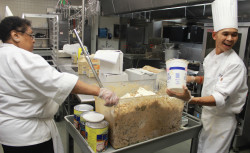 Of only seven certified executive chefs in Memphis, St. Jude’s employs four of them, another eight culinary school graduates and dozens of others keep the kitchen humming.
Of only seven certified executive chefs in Memphis, St. Jude’s employs four of them, another eight culinary school graduates and dozens of others keep the kitchen humming.
Volume alone demands a well-tuned machine.
Up to 50 patients can select three squares a day from a menu, or ask for anything they’re hungry for.
At the hospital’s >Kay Café, staff and families devour another 2,500 meals a day.
On top of all that, the culinary grads also coordinate the upgraded catering. In-house seminars, visiting scientists, and such can mean up to 40 more meals daily, and that doesn’t count frequent outside fund-raisers for St. Jude’s and other nonprofits.
McMath likes to take his team on the road. “It gives them a chance get out of the kitchen and stretch out a little. Most of these folks gave up other jobs to work here so we need to keep them challenged.” Also more in line with the St. Jude mission.
Still much of the effort to turn away from industrialized cooking throughout the food operation rests with the staff McMath inherited.
He’s converting them, one tomato at a time: “Some cooks have been here for 30 years and they only know how to cook ‘hospital food.’ How do you get them excited about a fresh tomato?”
The on-campus garden is one way. The kitchen staff composts everything. They’re involved in growing and harvesting fresh crops in over sixty raised beds on the campus. They’re invested in the food before it ever hits the pan. “Most hospitals cook to the lowest common denominator,” says McMath, with one-type-fits-all diets, whether it’s salt-free or pepper-free. “We don’t do that here.”
“I feel like I’ve been preparing for this my whole life,” Rick Farmer, executive chef











